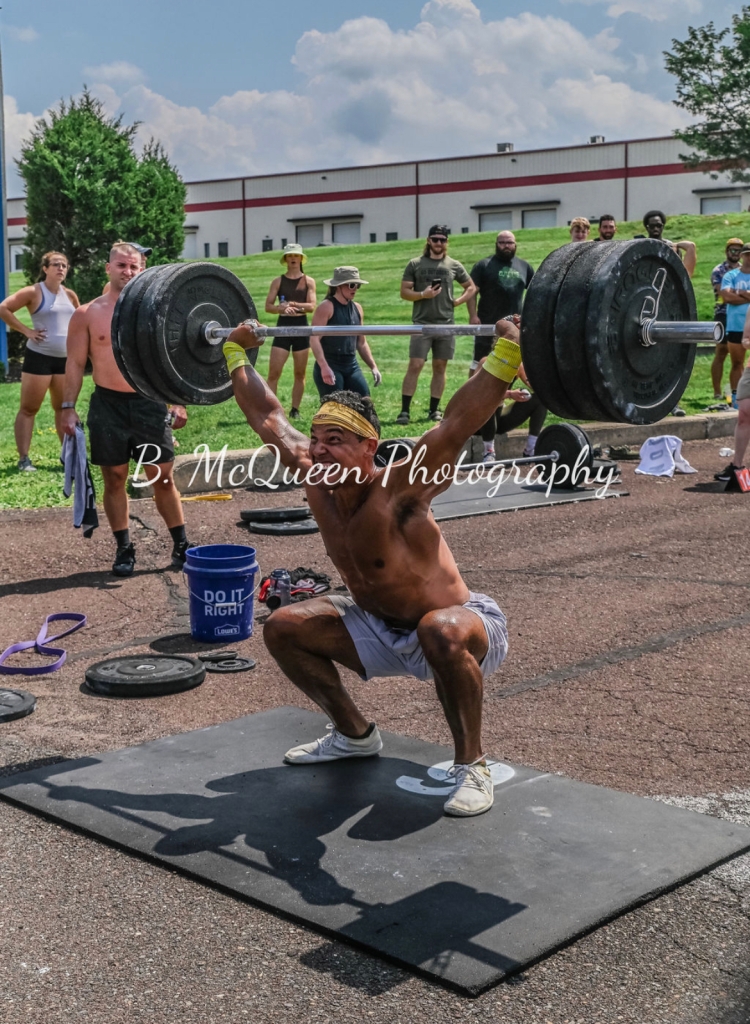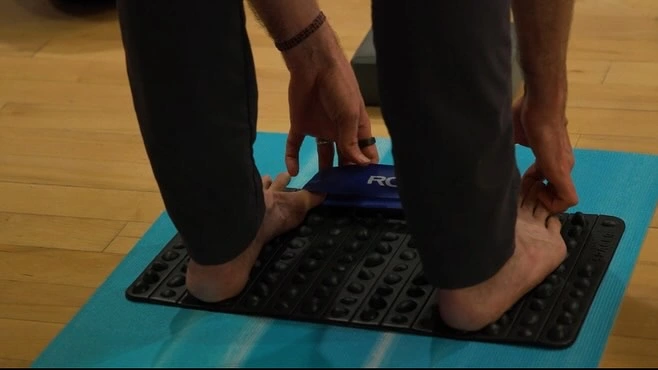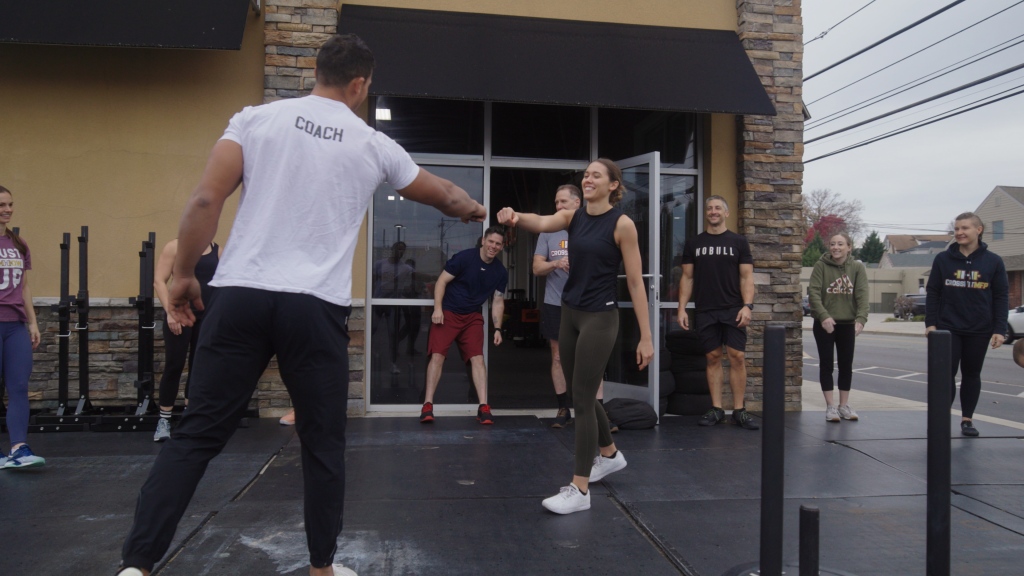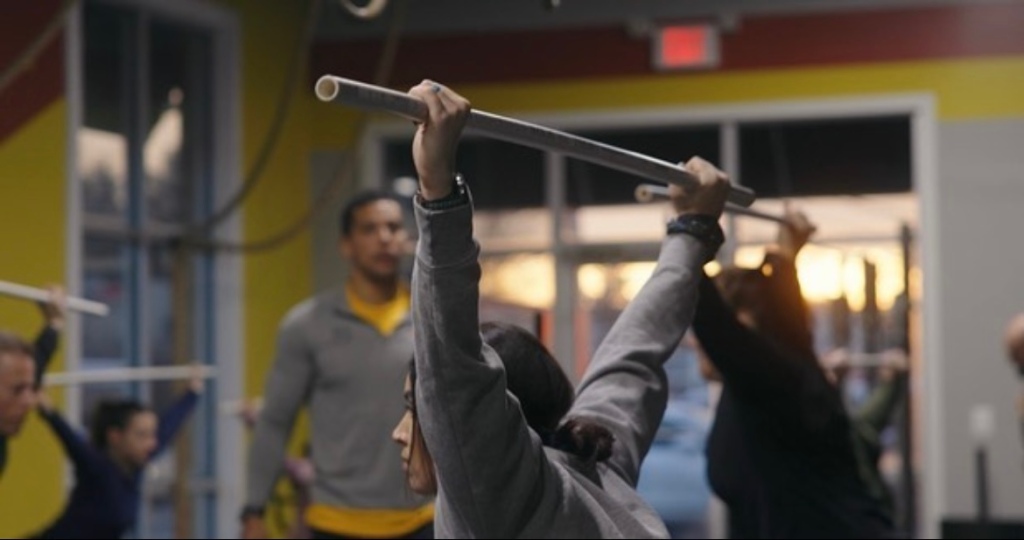Foot Function 101: Can You Even?
Honor your Foundation: Our first common sense application is easy to understand. Humans are weight-bearing organisms, specifically through our lower extremities. Our foot is our first line of defense against the surfaces of the earth; this means it has a significant responsibility to support our whole physical body, as well as become resilient to any environmental stimuli (impact/surfaces). This is a simple concept, but it’s often undervalued!
Science Lesson: Foot Anatomy and (F)isiology: Each foot is made up of 26 bones, 30 joints, and more than 100 muscles, tendons, and ligaments, all of which work together to provide support, balance, and mobility. This complexity is enhanced due to the variety of movement of the joints within the foot function. Especially the ankle joint, which plantar flexes (push down), dorsiflexes (pull up), eversion (roll the outside), and inversion (roll inside). In addition, the joints of the toes and metatarsals (bones between the toes and ankle) are just as significant when relating to foot function, specifically the big toe. Lastly, the foot is kept intact by a significantly tensile piece of connective tissue, called the plantar fascia (bottom of the foot). In other words, the more detail there is, the more it needs attention!
The Xs and Os Assessment: Test Your Basic Foot Function
The Toes: Can you splay (spread) your toes apart to where you see clear space in between? How much tension and force can you create by lifting your toes up and curling your toes down? How about doing “Toega” by lifting the big toe up, then pushing the little toes down, then vice versa? Or can you complete a “wavelike” effect from little toe to big toe? Basically, can your toes function similarly to your fingers?
The Ankle: Sit on the ground, hug one leg, and straighten the other leg in front. Then lift the straight leg, and move your ankle joint slowly in controlled circles clockwise and counterclockwise. Is there limitation/stiffness when moving through the ranges of up, down, and rolling side to side? Then, you can half kneel on the ground, place your hand on the knee of the kneeling leg, then move the knee forward, side to side, and in a semicircle. What is the range of motion look and feel like in the ankle joint? Can your knee go past your toe with a flat foot?
The Whole Unit: Practice standing on one foot. Think about creating a “claw” with your big toe, pinky toe, and heel, creating a “tripod” foot. Notice if your foot feels more stable? Another test would be to practice 20s through each:
1) Walking on your toes
2) Walking on your heels
3) Walking on the outsides of the feet (roll out)
4) Walking on the insides of the feet (cave-in)
Is any of that painful or difficult?

Understanding the Basics: Why care about foot function?
Our feet are quite literally our foundation. When fully grasping that anatomical reality, we can begin to look at more reasons to be mindful of our feet.
Support our Longevity: We are meant to move freely, perform daily tasks, and live optimally through an active lifestyle. Functional feet grant us the mobility and physical freedom to navigate our environment. If we develop our feet, this encourages movement patterns that are more aligned with the body’s desired biomechanics. This is specifically related to the knees, hips, and midline to move optimally and without pain. Having the physical ability to explore life has the potential to support our overall well-being – being mentally able to perform in life with minimal physical dysfunctions.
Enhance our Physical Abilities/Performance: We have yet to discover the full potential of strengthening our feet for enhanced performance. There are so many intrinsic foot muscles that are not expressed optimally when wearing traditional supportive shoes for the majority of our lives. To some extent, we would need to consistently commit just as much time to redeveloping these muscles, which is another challenge in itself! Now, this commitment is worth it. The beautiful complexity of the foot structure allows for more mobility, stability, and power. The fascia, joints, and tendons are anatomically structured to absorb and produce significant amounts of SYNERGISTIC force!
Injury prevention: The goal is to build as much resiliency as possible to AVOID any implications of foot dysfunction. Since we’re constantly using our feet, we are always exposed to possible setbacks. Typically, I emphasize this when I train my high school athletes. Although young and resilient, the possibility of injury is inevitable. By taking preventative action, we set ourselves up for long-term success. Even if you are not an “athlete,” we can look at injury prevention in other areas of our body (knee/hips/spine) when we prioritize foot function.
More than Meets the Eye: Our foot health involves much more than our physical outer layers. Our feet are rich in nerve endings that can positively stimulate the nervous system, all of our organs, and biological tissues (aka reflexology). More importantly, this can neurologically enhance our brains’ abilities to connect with many complex muscles and functions of the foot. One example is enhancing proprioception, which is awareness of your body position in space. This can lead to better coordination and improved movement patterns due to your cognitive requirements to think about the detailed intricacies of the foot.
Foot Stigmas, Misconceptions, and Effects:
“The Band-Aid Effect”: Supportive Shoes, High Arches and Orthotics
Think about some of the shoes you have worn throughout your own life. Now, understand that most foot function issues arise from:
1) Footwear that constricts the foot from its optimal function (via X’s and O’s assessment)
2) Lack of daily foot movement/restoration in bare feet
3) Trauma caused either by lack of awareness via 1 or 2, or an injury (twisting an ankle/sport/play).
Thicker Shoes Do Not Mean Happier Feet
Many people believe that wearing shoes with thick cushioning and arch support is the best way to protect their feet. Higher arches are often perceived as desirable, and orthotics allow your foot to perform “optimally.” The main problem here is the concept of DEPENDENCY. When dependent on high arches and cushioning, muscles, and tendons become weakened, the structure, joints, and ligaments become less stable, and the natural ability and alignment of the foot deteriorates (e.g.: Bunions).
In addition, people with “Flat Feet” problems seem to put themselves into a hole of no return, leading to one example of what I call “broken glass syndrome.” Another example I commonly work with is individuals with Plantar Fasciitis. Although most of these issues develop due to years of neglecting the foot, the true answer to these problems involves doing real, long-term, consistent work. Proper foot care is a process. It’s a long game for us to play, and it’s never too late for you to start your barefoot journey.
Understanding the Band-Aid Effect
Please understand that there are benefits to wearing specific shoes for support and temporary function/relief – especially if your feet are significantly damaged. No matter how severe foot damage may seem, the foot can regain strength, mobility, stability, and alignment through the proper movement/exercise protocols, a simple change in frequent footwear, and some extra barefoot practices. Prevention is the key component regardless of where you are in your journey. We can increase our ability to thrive without quick fixes and avoid potential long-term issues/imbalances that may arise from these band-aid effects.
“The Primal Effect”: No shoes, No Socks, All Skin
While being barefoot is very valuable, some people assume that going completely barefoot is the only way to maintain foot health. For the most part, I would encourage you to explore as much time as possible throughout your day without wearing shoes or socks. With that said, being barefoot 24/7 it’s not always practical or realistic in modern environments/lifestyles. Don’t feel pressured to be always primal!
Insight about the Primal Effect: Striking a balance between barefoot time and wearing appropriate footwear is key. First, I would encourage walking on a variety of surfaces, as training barefoot on various surfaces can challenge your feet and body in different ways, potentially improving overall adaptability and developing blood flow/circulation. With that said, it’s important to note that the suitability of barefoot training can vary among individuals. Some people may have foot conditions that require specific footwear, while others might not immediately thrive, or understand barefoot training. Ideally, one can start by choosing footwear that allows your feet to move naturally and provide protection when needed. For those new to barefoot training, I recommend a gradual transition. Start with short sessions and gradually increase intensity and duration. The important part is that although the primal effect has benefits, we still need to be mindful that logistically it is a difficult process for many. Lastly, there are limitations at play. Some examples could be:
- Initial Foot Conditions: People with certain foot conditions such as plantar fasciitis, bunions, hammertoes, imbalances, or injuries.
- Environmental Factors: In some environments, going completely barefoot might not always be hygienic or safe.
- Specific Activities: Certain activities might require specific footwear for safety and performance reasons. For instance, activities that involve work such as contracting, high-impact movements, or certain sports necessitate specialized shoes.
- Medical Advice: Individuals who are more prone to injury or have reduced sensation in their feet (such as diabetics) may need added protection. Individuals with specific medical conditions or recent surgeries might be advised by healthcare professionals to wear specific footwear for recovery and prevention of complications.
“The Wholisitc Effect ”: Fashion, Longevity, Emotional Health
Foot health is deeply interconnected with our overall health and well-being. As human beings, it’s important for us to shift our perspectives and values – away from fashion and towards the infinite world of function.
Now, I love swag too, and there’s nothing wrong with wearing shoes that look good, but don’t get disconnected from the body’s potential. Valuing fashion over foot function can impact your longevity. Many individuals believe that foot pain is an inevitable part of life – especially as they age, but it does not have to be like this. While the style does carry cultural significance, understand that your ultimate priority should be the health and comfort of your feet. Seek brands that offer both aesthetic and proper foot support!
Insight: Having a wholistic mindset about our feet can broaden our perspective about the importance of taking care of those piggies! I always think about coming to a balance. If style and swag are important to you, then live it up especially if it supports your mental and emotional well-being. Just be mindful that IF any dysfunctions (as already discussed) arise, are you willing to detach yourself from fashion, to support function?
For the record, I was obsessed with my fitness and coaching footwear swag. Guilty as charged!

How to Get Started: The MFP Perspective
I get it, feet can be weird. Trust me, my feet are HORRID! Personally, I still have a LONG WAY to go with my foot ability, and I am determined to see where my potential takes me. Although I come off as an extremist with training barefoot, integrating foot function concepts into your lifestyle or community can be progressive, simple, and impactful. I have slowly over the years sprinkled in opportunities to have conversations and offer guidance about improving foot performance. Here is a handful of #GetMadFit Tips to take with you.
Reflect on Medicine 3.0: The goal is to understand the root causes of our physical dysfunctions that can very likely be traced back to our foot function. Don’t take your feet for granted! You simply must reframe your perspectives, and be willing to commit, especially if you are someone like me who needs to integrate foot health into their lifestyle. Think about how you could enhance your physical abilities by taking more time to “Let the Dawgs Out!”
Progression is Key, Microdose/Plan Ahead: Start with sprinkling in structured days prioritized to incorporating components of barefoot physical activity. This can help transition the foot to tolerate no support or outside structure and slowly reap the benefits of foot abilities. Some ideas include:
- Warm-Up protocols: Include movements prioritized to foot health within warm-up activities.
- Specialized Workouts: I have a “No Shoes Day Tuesday” that incorporates non-traditional strength development while not wearing any shoes (e.g.: weighted carries, unilateral movement, jumping, and landing)
- Recovery Protocols: I offer two recovery-based classes that either encourage no shoes, or completely barefoot. In Wodify, these classes are called Longevity and Infinity
- Engage in other barefoot activities: This includes forms of Yoga or Martial Arts. Spend intentional time at home without socks or shoes.
Use Tools in Your Toolbox: As you plan time to expose the toes, you can enhance your foot function progress by implementing tools and other methods.
- Change Your Footwear: I get it. Shoes with a wide toe box, completely flat, and have almost no support are not sexy, but there is a tradeoff for investing in your longevity, and fashion is a potential loss. Personally, I can say that after 2 years of committing to only barefoot-style shoes, my feet and physical body have made significant progress.
- A few brands I encourage are Vivo and FeelGrounds
- Start simple: Go on walks
- Note: I am not an influencer, and not getting any credit for promoting barefoot shoes/training.
- Gadgets: The damage most of us have done to our feet may need some reinforcements. There are a few physical therapy tools that can be purchased to help improve the process of foot function. These include:
- Toe Spacers: Allow you to splay and mobilize the toes.
- Rock Mat: A non-traditional rocky surface used for therapeutic reasons, strengthens plantar fascia, and promotes blood flow
- Lacrosse Ball/Other Sphere Object: Massage and break up the plantar fascia when “tenderoni” from adapting to barefoot activities, or when the foot has been compressed in shoes for a long period of time.
“Wiggle Your Big Toe”: Next to footwear, we need to be proactive with intentionally training all aspects of the foot. “Wiggle your big toe” is a mantra that Uma Thurman notoriously stated in her famous Tarantino film, Kill Bill. This is also a line I have repeated thousands of times to myself, as I have had to redevelop the function of my big toe. I could write just as much information about the importance of the big toe in relation to the foot and its ability to produce stability and force.
- Practice TOEGA: As stated within the “Xs and Os” assessment.
- Sit on our toes: Practice the classic “Hero Pose” with your toes tucked
- Isometric Strength: Begin with any exercise that incorporates the toes being flexed, and you have to create a force within the big toe. Some examples: Quadruped holds, Split Squat/Lunge hold, Sissy Squats

Be Mindful, Performance Enhancing Footwear: Ideally, we should have the natural mobility to perform physical movement without relying on footwear. With that said, there is a ton of value to specific shoes for specific outcomes. One specific example would be weightlifting shoes. These elevate the heel to provide mobility within the ankle and have a dense sole to stabilize the foot. These significantly enhance your ability to perform exercises such as squats. Be mindful of WHY vs. RELY to avoid the “band-aid effect.”
*Disclaimer 1: I am not a certified foot specialist (podiatrist). All the claims in this article are based on my personal and practical experience.
*Disclaimer 2: With all of this said, you can still live until you are 100 and perform at high levels completely disregarding your foot health and function. I would just assume that you are missing out on living an optimal lifestyle or the lack of foot attention may catch up down the road.
Article Sponsored by MFP Collaboration partner, “Fly Feet” of Havertown.







Leave a comment